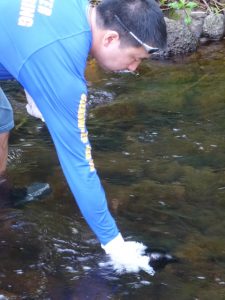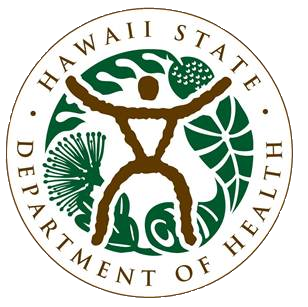2016 Interagency Pesticide Monitoring Initiative

RECENT ACTIVITY 2016
In order to address data gaps identified in the 2013-14 DOH/DOA surface water study and fulfill community requests for additional monitoring data, DOA has entered into a Memorandum of Understanding with United States Geological Survey (USGS) for a $500,000 surface water quality study.
Surface water on Oʻahu and Kauaʻi will be sampled for pesticides before and during storm events to evaluate whether pesticides are moving offsite at unacceptable levels. Different land uses including, urban, rural, and agricultural will be evaluated. Interim results will be released after the first year of the project. DOH is acting as scientific and technical advisors to the project. DOA has committed to an additional year of sampling in all four counties, building on the results gathered in 2016-17.
-
- USGS considered 52 candidate sites on Kauaʻi, 100 candidate sites on Oʻahu for multiple sampling events
- 23 sites on Kauaʻi and 34 sites on Oʻahu meet criteria for size of drainage, % land use, previous data, known concerns
- Preliminary sampling to test methodologies underway at sites on Oʻahu and Kauaʻi, using a variety of sampling methods for different conditions
2013-2014 Statewide pesticide sampling pilot project
In response to growing community concerns about possible offsite impacts of currently used pesticides on local communities and ecosystems, Hawaiʻi Department of Health (HDOH) and the Hawaiʻi Department of Agriculture (HDOA) used agency special funds to design and implement a pilot study to sample surface waters and sediments state wide. The agencies enlisted the help of the U.S. Geological Survey (USGS) to provide state of the art analytical services and expert technical assistance. To extend the reach of our project, USGS provided additional matching funds from their Cooperative Water Program.
In December and January, HDOH sampled surface water and sediment at 24 surface water locations statewide for a comprehensive suite of currently used pesticides. The sites were selected with help from local stakeholders to represent four different land uses, each with differing pesticide use practices. Locations were chosen in areas across the state where currently used pesticides have the potential to enter local surface waters and/or the near shore marine environment.
Study results are being released so that the wide variety of interested parties can evaluate the data immediately and begin to work together to learn more about the occurrence and concentration of currently used pesticides in non-target environments, and how they may relate to different land use types and current pesticide practices. Further assessments and monitoring are dependent upon future funding. As a community, we’ll need to determine if ongoing pesticide monitoring is a priority. In the meantime, we hope to share more details with each of the counties and facilitate discussion among the key stakeholders.
Fact Sheets
The following fact sheets briefly describe the 2013-14 Statewide Pesticide Sampling Pilot Project. The short-term goal of this joint sampling effort is to gather initial data on the types and concentrations of currently used pesticides in surface water and sediment associated with a variety of differing land uses.
Data tables and graphs
The following spreadsheet provides raw data from the 2013-14 Statewide project.
-
US Geological Survey Resources
As the Nation’s largest water, earth, and biological science and civilian mapping agency, the U.S. Geological Survey (USGS) collects, monitors, analyzes, and provides scientific understanding about natural resource conditions, issues, and problems. As part of the National Water-Quality Assessment Program (NAWQA), the Pesticide National Synthesis Project, which began in 1992, is a national-scale assessment of the occurrence and behavior of pesticides in streams and ground water of the United States and the potential for pesticides to adversely affect drinking-water supplies or aquatic ecosystems.
Two studies conducted by USGS in Hawaiʻi specifically discuss pesticides in surface and groundwater and how they relate to current and former land uses. The report entitled Water Quality on the Island of Oʻahu, Hawaiʻi, 1999–2001 contains the major findings of a 1999–2001 assessment of pesticides in surface and groundwater on the island of Oʻahu, Hawaiʻi, and provide an excellent reference to understand how pesticide detections reflect upgradient human activities, and how groundwater can store and transport historically used pesticides into streams. The earlier study, Ground-Water Quality and its Relation to Land Use on Oʻahu, Hawaiʻi, 2000-01 measured the presence of a wide spectrum on organic contaminants in the main drinking-water source aquifers of Oʻahu using a one-time sampling of untreated ground water from 30 public-supply wells and 15 monitoring wells. Both of these reports describe earlier detections of a number of the same current and historically used pesticides detected in our Pesticide Survey.
Glyphosate Studies USGS leads the country in assessing our streams and lakes for glyphosate and its breakdown product, AMPA in round water and surface waters. Recently, they have begun studying bed sediment concentrations, because glyphosate is known to bind tightly to sediments. Click here for a summary of their current work and publications.
-
Standards, Guidelines and Benchmark Resources for Assessing Water Quality and Bed Sediment Data Results

